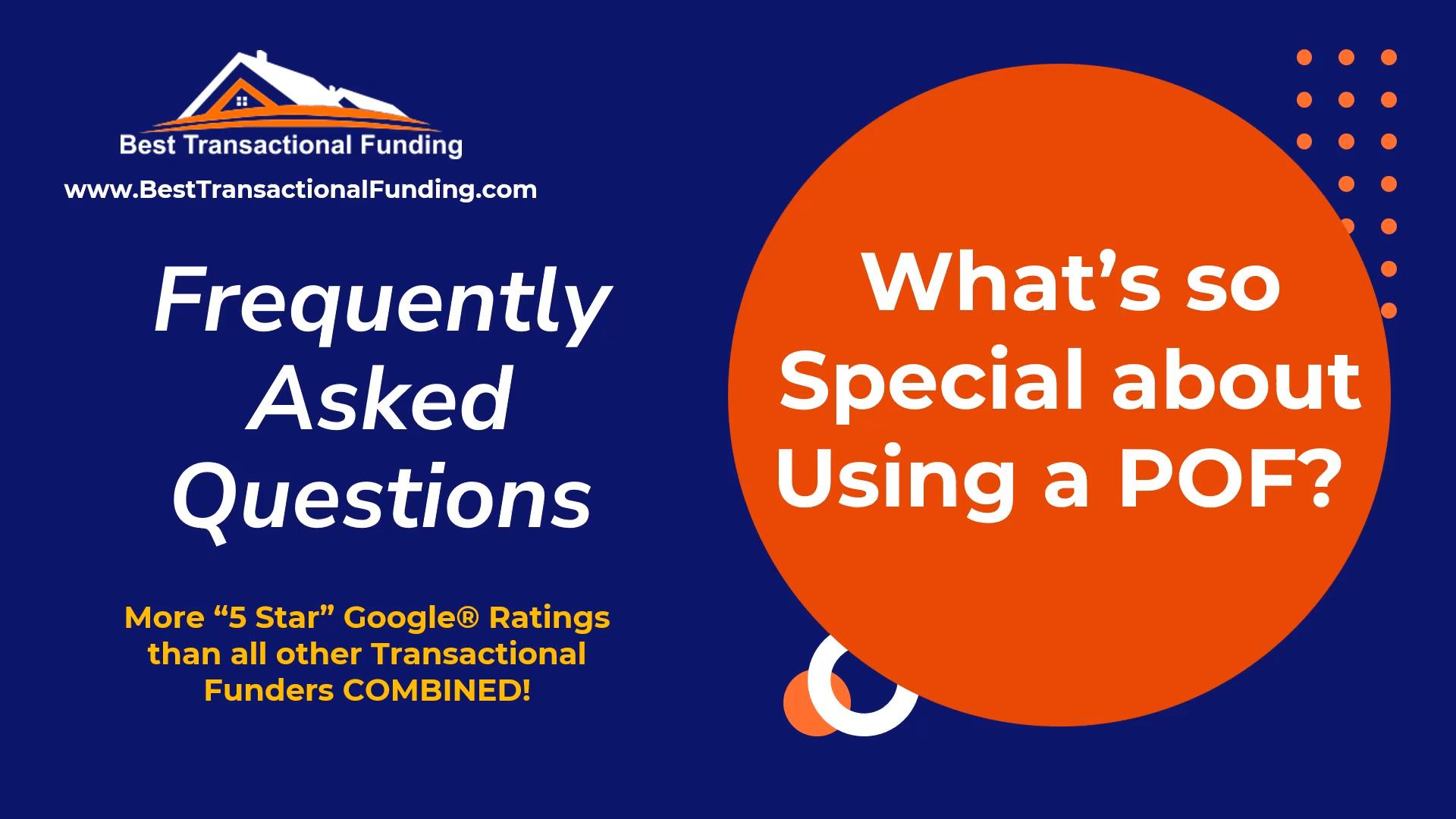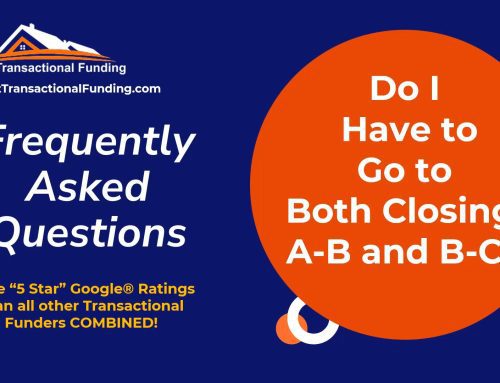
For most investors having a Proof of Funds (or “POF”) sets up their credibility about as high as it can go with a seller or a listing agent.
- The ultimate proof of funds is one where the investor’s name and address are on his personal or corporate bank statement.
- Unfortunately, having a balance in the bank, in the name of the buyer to purchase the property, happens on less than 2% of the offers made to sellers.
- The rest of the time, the investors have to show someone else’s proof of funds or manufacture their own.
- A whole industry of bogus POFs has evolved in the real estate industry resulting in sellers and listing agents calling and checking to make sure a POF is real.
- Some POF’s are simply a letter from the bank officer stating that the account in question has had an “average balance” of some amount for the past month.
- Others are just a letter from the person providing the POF that he is ready, willing, and able to fund a specific transaction with no actual proof of funds available.
- The price of POF’s online ranges from free to thousands of dollars.
- The most expensive ones are for amounts more than $10 million and are at best a serious waste of money.
- I recently got a request for POF in the amount of $1 billion, I sometimes wonder what people are thinking.
- Your best option is to get a proof of funds from what you tell your seller is your “funding partner” and that the attached bank statement is his.
- This has to be the truth with our POF, and I ask the seller listing agent to call me to confirm it.
- Certain sellers such as HUD, Fannie Mae, and a small group of listing agents will only accept a proof of funds that is a bank statement with your name and address on it – this is most often a deal killer which may force you to manufacture your own POF.
- If you go online to get a free POF, try all the companies offering them and make certain that the POF or bank statement you get comes with a Letter of Credit (“LOC”) for a higher amount then your specific offer – this gives you “clout” with the seller or the listing agent.
- I also suggest you only provide your proof of funds when asked for it, not just flash it around with every offer so as to make it look more natural when asked for it.
- One final note, if you can’t find a buyer in the time you had, cancel your contract during your inspection period or get an extension from the seller, don’t just “ghost” the seller or the listing agent.
- Your reputation will get you deals or kill your future in the industry.
Keywords – Proof of Funds differences, POF’s, Proof of Funds Uses
If you have any additional questions, contact me directly at DaveDinkelQuestions@gmail.com.
If you need hard money instead of transactional funding, contact me for referrals to private hard money lenders.
Be sure to check out BestTransactionalFunding.com for all your same-day double closing needs, including a list of Investor-Friendly Closing Agents in various states.
We have more five-star Google ratings than all the other transactional funders combined.
Visit DaveDinkel.com for full privacy policy, terms of use, etc. Be sure to contact us through the website at davedinkel.com if you have questions or concerns. Results mentioned in this presentation and any video, article, and/or material related to Dave Dinkel and his associated businesses are not typical nor are a guarantee of any earning potential. No advice is to be construed as legal, accounting, or professional advice EVER. Please consult related licensed and qualified professionals before taking any action. No person(s) mentioned in the articles and /or shown on videos received compensation in any form for their opinions.



